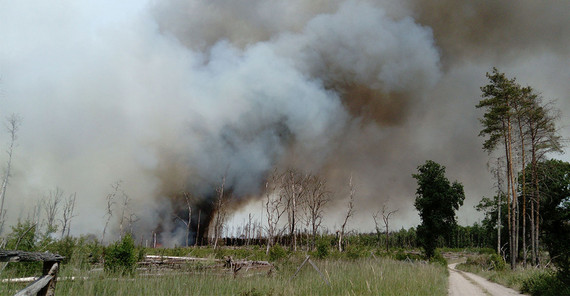For five years, I have been researching how vegetation develops in burnt pine forests in the PYROPHOB project. The project areas I investigate near Treuenbrietzen and on the former Jüterbog military training ground are only about 50 kilometers from Potsdam. Both areas experienced forest fires in the summers of 2018 and 2019. For my dissertation, I documented every year which plant species occur there and at what incidence. A fire increases the short-term availability of nutrients and creates space, as a large part of the humus layer and the previous vegetation usually burn. This provides an optimal habitat for many plant species and often leads to higher diversity than before the fire. Plants colonize burnt areas, among other ways, through flying seeds or through seeds already present in the soil. Our study areas in Treuenbrietzen were very quickly covered almost entirely by trembling poplars, which by now, at the end of my dissertation, are already over ten meters high. Over the course of five years, I have identified more than 200 different plant species. Among them are some botanical highlights, such as the red-tipped cudweed, which is actually considered extinct in Brandenburg. The composition of vegetation on forest fire sites depends on various factors – primarily on forest management after the fire, for example, whether clear-cutting was carried out, whether the area was ploughed and replanted, or whether nature was left to its own devices. I have already observed major changes in the vegetation over the period of five years. Species typical of open habitats are already declining, while species characteristic of forests are slowly increasing.
During my field research, I experienced first-hand that new fires can always occur. In June 2022, I was surprised by another fire during my data collection in Treuenbrietzen, which ultimately meant the loss of some study areas, and the former Jüterbog military training area was also temporarily closed due to fires. According to forecasts, the risk of forest fires will continue to increase in the coming years.
Maren Schüle has been a PhD student in the PYROPHOB project since 2020, which researches how burnt forests are recolonized in the first years after wildfires. The project aims to develop pyrophobic (fire-repellent) and climate-change-resilient forests.
Here you can find further information about PYROPHOB: https://www.uni-potsdam.de/en/ibb-allgbot/research/pyrophob
This text was published in the university magazine Portal - Zwei 2025 „Demokratie“. (in German)
Here You can find all articles in English at a glance: https://www.uni-potsdam.de/en/explore-the-up/up-to-date/university-magazine/portal-two-2025-democracy


